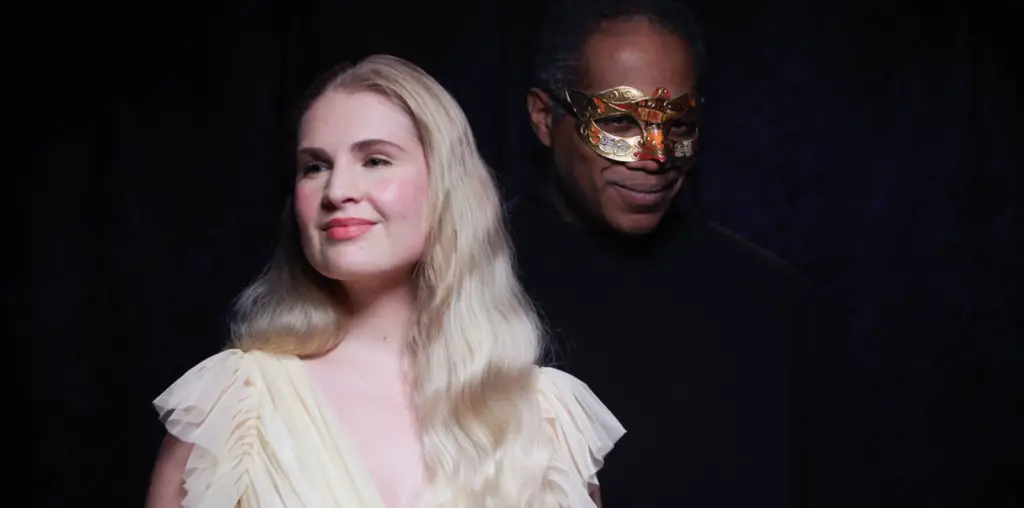
A major problem with the appreciation of wide screen films is the fact that it is virtually impossible to appreciate them today as they were meant to be seen: on a large movie screen. Until the relatively recent introduction of letterboxing, TV and video presentations of wide screen films offered haphazard slicing of screen compositions in a vain attempt to fit the images of an elongated rectangular cinema screen into the square dimensions of a TV screen. Letterboxing attempts to maintain as much of the original screen composition as possible, yet Hart is less than enthused about its results.
“I think letterboxing in conventional VHS is a wretched idea for the most part,” he comments. “The system just doesn’t have any resolution to spare. I’m not down on VHS. I bought my first VHS recorder in 1977, and still have it, but I’ve owned over a dozen VCRs since then. I suppose a letterboxed VHS image shown on a 13” TV would look okay, but that ain’t ‘the movies.’ Now DVD is another animal entirely. But so is SVHS (I own five such machines), and laser disc (I own three players). All these higher resolution formats have the potential to give a very satisfactory imitation of a theater experience, assuming you have the money it takes to hook them to a good projection system. DVD is wonderful, and certainly seems to have the best available image and sound when the producers do their job right. I resisted it for a long time, thinking that the compressed video would look like a bad JPG file. But I finally jumped in and now have two players, one in my home theater and one beside my computer feeding an old Commodore monitor.
“But as for wide screen dimensional ratios, and that’s something that I seem to take an unusual stand on. Anyone that’s looked at my section on “Letterbox Lunacy” in The American WideScreen Museum will find that I don’t think it’s necessary to be 100% faithful to the contents of that film frame. In the first place, your local theater probably cares less about it than you do. When ‘Ben-Hur’ and ‘Mutiny on the Bounty,’ both made in a 2.76:1 aspect ratio, played in their roadshow engagements, theaters did the best they could to show the whole image but it wasn’t possible in 99% of the cases. Audiences didn’t sit in their reserved seats and measure the aspect ratio. They sat there and got a whole bunch of entertainment for their bucks. Why should video be any different? If a film looks good and is thoroughly enjoyable, regardless of the precise numbers, why do people go ballistic over an aspect ratio that they couldn’t even get in a theater? I show a series of frames from ‘Patton’ in the “Letterbox Lunacy” section. It’s obvious that the 2.2:1 aspect ratio of the letterboxed laser disc was done to appease the anal retentives who like to measure things. The fact that the transfer was done from a 2.35:1 35mm reduction escapes them.”
And what is the state of the original negatives and prints from the productions shot in these now-obsolete technologies, such as Cinerama and Todd-AO? And can these films truly be restored if there is no possible way to present them on the wide screen again? “Ah, film is a wonderful medium–there’s nothing that was ever done on film that can never be projected again,” Hart insists. “Optical conversion lets us see anything ever filmed. And optical conversion was also part of those systems in the first place. VistaVision and Technirama, the horizontal eight perf systems, rarely were shown in their native format. They had been designed to be reduction printed to standard 35mm, so there’s not a problem with them. Technirama was widely seen in its Super Technirama 70 variant, which was an optical conversion to a Todd-AO compatible 70mm frame. And Todd-AO itself, other than adjusting the projector speed for the first two features in that process (“Oklahoma!” and “Around the World in 80 Days”), can be shown in hundreds of theaters that still have 35/70 projectors and magnetic sound capabilities. The majority of film goers saw Todd-AO features that were optically reduced to CinemaScope compatible anamorphic 35mm. There was even a few CinemaScope compatible anamorphic reduction prints of ‘Windjammer,’ the only feature shot in the three-camera Cinemiracle, (the process that skirted around Fred Waller’s Cinerama patents claiming to be making improvements, which didn’t appear.) As for restoration, Bob Harris has already restored VistaVision (“Vertigo”), and essentially Todd-AO (“My Fair Lady” and “Lawrence of Arabia,” both in Super Panavision), and Technirama (“Spartacus”). All those films got theatrical re-releases with beautiful prints, and sold like hotcakes in the video market. Most producers don’t want to spend the kind of bucks required for a Harris/Katz type of restoration, but not a single one of their projects has done disappointing box office and there were new fortunes made on tape, LD, and now DVD, in addition to lots of ballyhooing done by the cable channels when they get to run one of the newly restored versions.”
One thing missing from The American WideScreen Museum are technologies currently in use, and the leading popular current wide screen technology has not earned Hart’s approval.
“IMAX is not cinema,” says Hart unhappily. “It’s something uniquely suited for small venues and rides. People avoided making movies in three strip Cinerama because it was cumbersome. But IMAX is not only cumbersome, it’s altogether impractical for a feature film. I’m not especially impressed by it. There are some good things that it has to offer but it won’t hit you in the gut like Cinerama could and it can’t tell a story like Todd-AO or CinemaScope could. On top of that, it’s the same shape as my TV. Engineers have been working for decades to change the shape of TV and they’re finally getting there. I also object to people touting their screen as being ten elephants high, or however they want to describe the size of that big square sheet. I’m an old fuddy-duddy and I want my movies wide, wide, wide!”
So where does Hart see the future of film projection heading? Not online, for certain. “Internet distribution of viewable films in a theater will NEVER happen,” he says. “The bandwidth necessary to create a digital image that even approaches 35mm film is hundreds of times greater than the fastest delivery method available on the Internet. Satellite has potential, but we’re not talking about something that delivers HBO to the house. We’re talking about a totally new satellite that can handle that sort of enormous data stream. It’ll cost billions to put one of those babies into orbit. It will likely come in its own good time, but don’t expect it to show up in the next few years. Digital projection, itself, can be pretty damned good. I’m not going to say that it will fill a 70 foot screen in a large theatre, but it can do a decent job in smaller houses, which certainly cannot afford the cost of the hardware at this time. Those few films that have been shown with digital projectors have cost the exhibitor little or nothing, with the costs being borne by the equipment people and the film distributor. Wide scale projection from digital tape or hard drive arrays is still a few years away.”
Visit Martin Hart’s web site The American WideScreen Museum for the most complete analysis of the history of the widescreen format.
Get the whole story and read part one of
MARTIN HART: LIVING ON THE WIDESCREEN.

